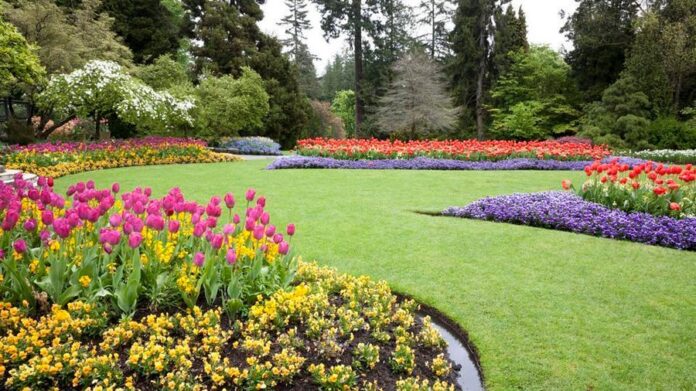Whether you intend to engage a professional landscaper or implement DIY designs of landscaping in Greenville, SC, it’s worth knowing basic landscape design concepts. With that knowledge, you can boost your creativity and unleash a flow of fresh ideas. Scenic landscape designs are the eyes of creatives. With these five primary design principles, you can get creative and get the components in your landscape design balanced and harmonious.
- Focalization
Most successful designs have focal points. Ideally, these spots draw your eyes on a first stare at something. Focalization also refers to a focalizing interest, centerpiece, or focal point. In every given perspective, the focus point points to the most powerful feature in a design. The front entrance is frequently the centerpiece of a house. When improving the entry of a property, the central landscaping theme is generally elements near a front doorway.
While focal points are ideal in every region of your environment, they are not always necessary. As such, designers should avoid using focus points excessively. It’s important to switch things up since people regularly admire fascinating plant shapes, color combinations, aesthetics, architectural designs, and sculptures. Get creative by making some eye-catching focus points with them.
- Balance
Balance entails the proportion of visual elements, hues, materials, and spacing. As you scale a design, ensure that you balance these aspects for it to look steady. Often, people are at ease in surroundings that provide a feeling of order with balance as the metrics. Here are two ways of balancing:
- Symmetrical Balancing
Symmetrical balancing is handy in traditional landscaping, where two sides of a landscape mirror each other. You can utilize geometric patterns throughout these settings, from walkways, landscape, and vegetation to clipping plants into forms. This style of equilibrium seems rigid and is frequently well-maintained.
- Asymmetrical Balancing
Unlike symmetrical balancing, informal or asymmetrical balancing implement more relaxed, fluid, and dynamic across a landscape. Landscapers use these ideas to produce visually appealing and welcoming landscapes. Such informal concepts are not initial developments of creatives centuries ago. Instead, they are natural visual perceptions possessed by most individuals. Using them as criteria assists planners and property owners in creating appealing environments.
- Lines And Rythm
Rhythms are products of repetitions that comply with a set of intervals in landscape designs. The gaps implemented by landscape designers are usually in given distances. Therefore, a rhythm is achievable by repeating plants, clusters of vegetation, light posts, seats, and other elements in the layout.
Designers can implement strips in landscapes utilizing the shapes and types of hardscapes, growing beds, areas where grass joins the pavement or other elements. The rhythmic and lining design approach offers a feeling of momentum to an environment that can pull you to it. It’s no wonder landscapes exude soothing feelings and make sweet spots.
- Simplicity Fitting The Proportion
It would help if you implemented minimalism on a scale that ratios well with the proportion of your property. Do this by keeping the landscapes moderate, uncluttered, and fuss-free; this isn’t the inverse of sophistication. Several landscapes include incredibly intricate characteristics, such as architectural style, waterfalls, and sophisticated lighting. Landscaping appeals to people, making them comfortable when it has fewer color combinations, curves, textures, and patterns. However, it doesn’t imply that they are too simple, dull, or unexciting.
The size connection of your minimalistic or straightforward design should be proportional to qualify as a simple design. Perception is relative from adults to children, vertically and horizontally, and in small and big buildings or yards. Meeting all these perception elements makes the environment admirable for everyone.
- Unity
The unity principle is only measurable once you have correctly performed the five landscaping principles within your landscape. In design, unity refers to how all aspects of a landscape function harmoniously to produce a magnificent overall design. Forms, sizes, colors, textures, and other elements create a cohesive environment. There’s also a repetition of patterns and colors. When looking to achieve polished finishes and a united setting, illumination, unique features, bedding designs, and pavements such as pedestrian ways must all function harmoniously.
Developing landscapes using these five primary landscaping design principles can be a great way of expressing your ideas. From color schemes, contrasting, and lining to harmonization, these elements can impact the outcome of a landscape design. Whenever you’re designing your landscape or hiring expert designers, you’ll appreciate the blending of design to provide an equally functional and aesthetically appealing yard. You can now invite friends and relatives to that barbeque meeting you’ve been postponing.











